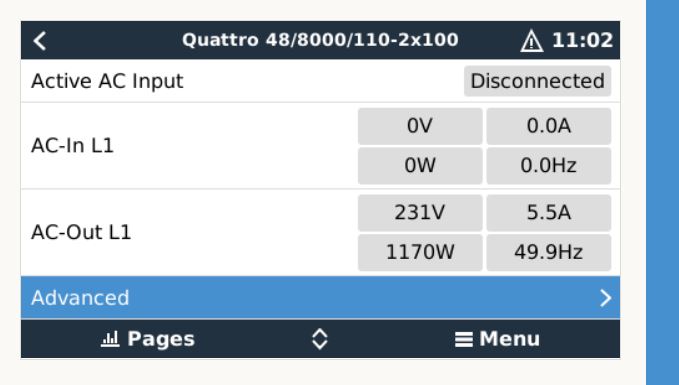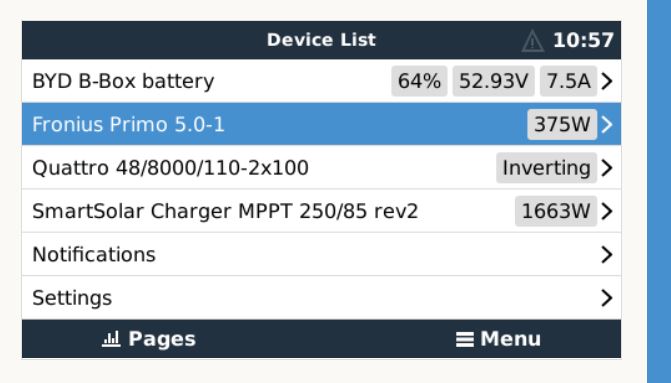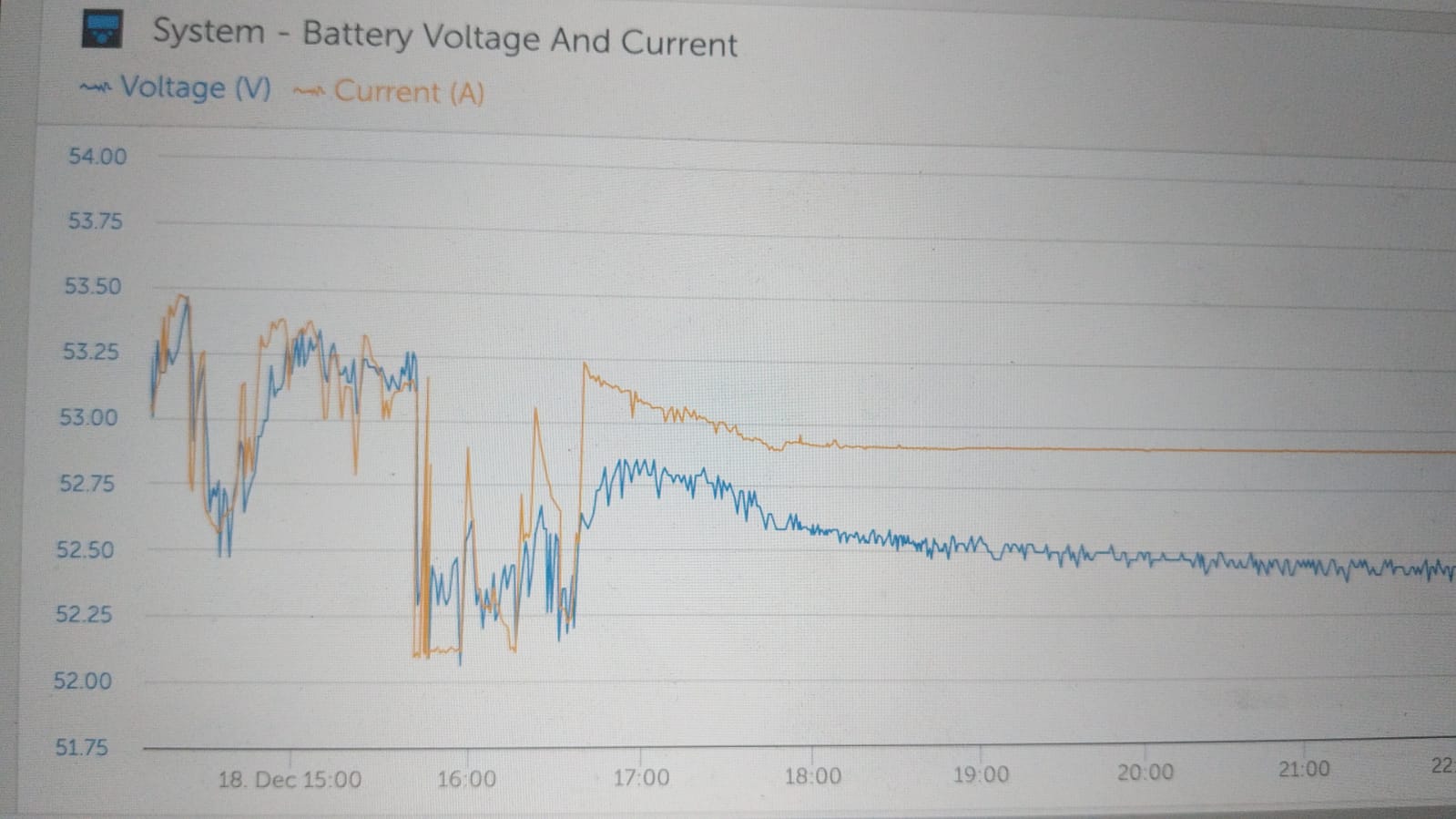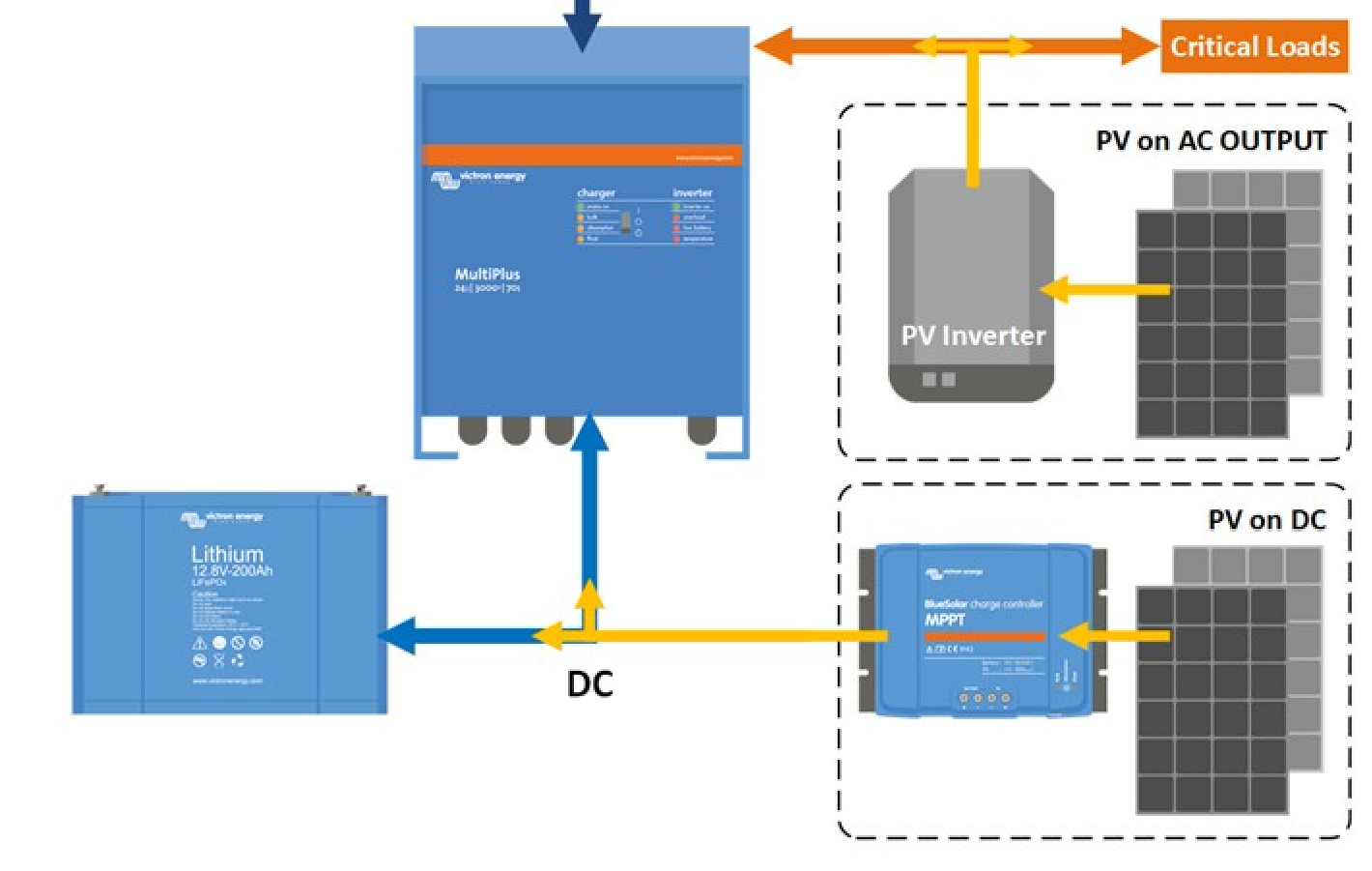I installed an 8kVA Victron Quattro Inverter, with Venus GX, 13.8kWH BYD battery, 250V 100A Smart solar MPPT Charge Controller, 3500W PV panels for the Charge controller.
Alao installed is a 5kW Fronius Primo Inverter with 6,300W PV panels
The system works fine and I could get as much as 5000W on the Fronius; but the production of the Fronius drops drastically almost daily; it could go as low as 190w (even when there's ample sunlight) and stays that way until the Fronius is restarted (then it starts producing normally again). Also when the batteries are full, the production of the Fronius drops and the loads start taking from the battery.
What could be responsible for this, and how can this be corrected?
Take note also that the panels are not shaded, and the production of the Charge Controller's panels stay as expected.
The system is entirely off grid.
The assistant used is the PV assistant.
I'll greatly appreciate any help I can get from @guy Stewart and from anyone. Thanks.



 @ Daniel Boekel, thanks so much for your response.
@ Daniel Boekel, thanks so much for your response. 




